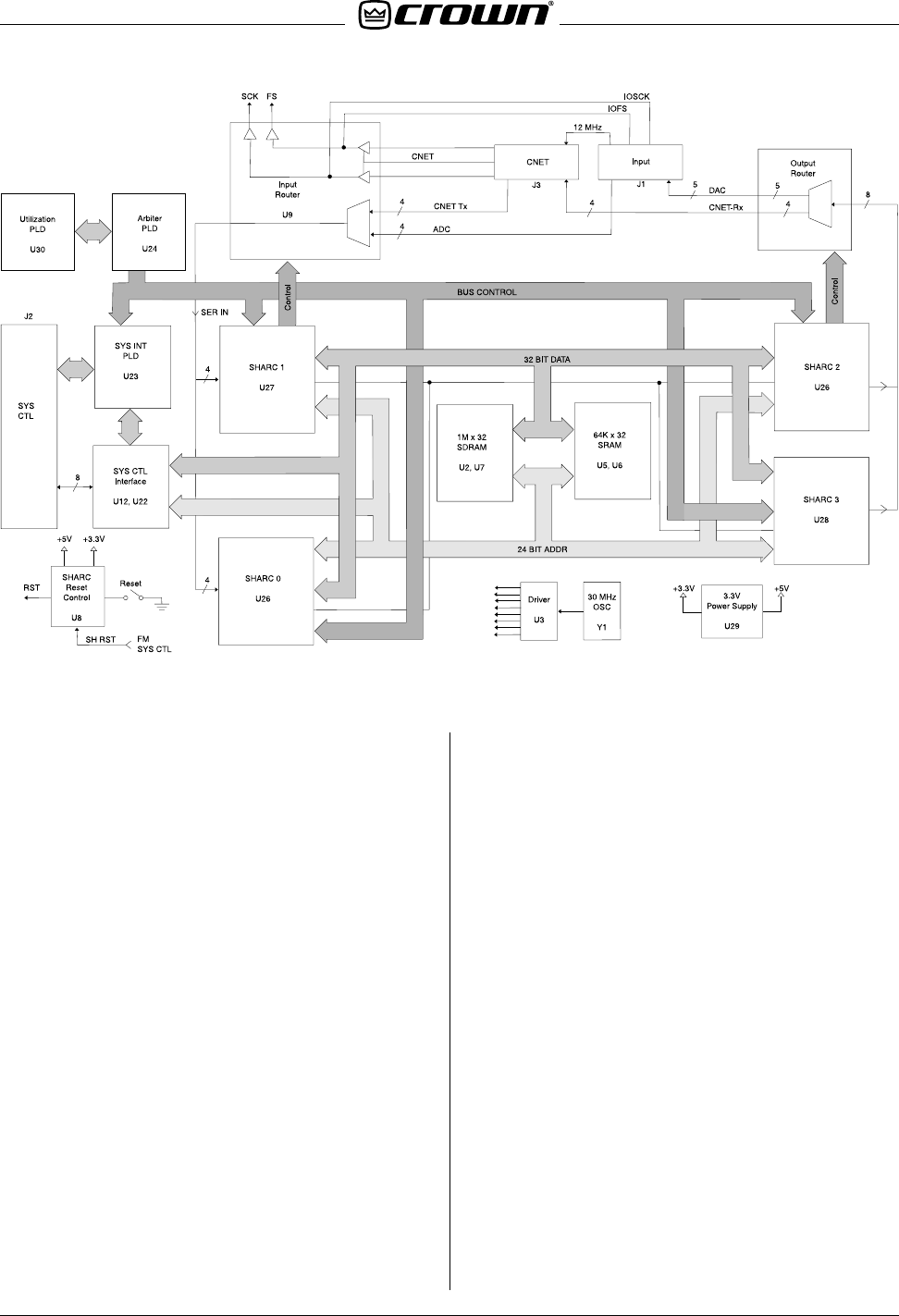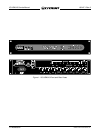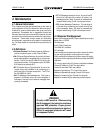
©2000 Crown International, Inc.
IQ-USM 810 Service Manual
3-6 Circuit Theory
130447-1 Rev. A
Figure 3.8 SHARC PWA Block Diagram
The System Controller will display the error code, then
begin the boot process again. By watching the boot
process on the front display, the error code can be read
at the end of the boot process before the next boot be-
gins.
3.5.5 PLDs
There are five Programmable Logic Devices (PLD) on
the SHARC PWA (U9, U11, U23, U24, and U30). These
IC's are programmed on the PWA and can be repro-
grammed. They have common control and clock lines
(ETCK, ETMS) and are daisy-chained by having each
output (TDO) tied to the next PLD's input (TDI). P3 al-
lows connection to the external PLD programmer.
3.5.6 Bus Arbitration
The 32-bit data and 24-bit address busses of the SHARC
PWA are shared between the System Controller and
the four SHARC processors. Shared SRAM memory
(U5-6) is also available to all processors. The Arbiter
PLD, U24, polices which has access to the bus through
the use of control signals such as bus requests (\HBR,
\SYSBR, \BR0-3), bus grants (\HBG, \SYSBG, \BG0-3),
and SHARC chip selects (\CS0-3). It regulates which
and when each processor has control of the bus to en-
sure there is no contention.
3.5.7 Bus Utilization
The Arbiter PLD also works with the Bus Utilization PLD,
U30, to monitor each SHARC processor and determine
how much of the available SHARC bus bandwidth each
is using. The Arbiter tells the Utilization PLD on an indi-
vidual bus cycle basis when each SHARC is on the bus
(UTILIN0-5) and this information is fed to the individual
SHARC's pulse width modulation inputs (UTILOUT0-3)
for calculation of bus access time. This information is
then reported to the System Controller when requested.
3.5.8 DSP Processing
As stated, the four SHARC processors (U25-28) are the
core of the DSP engine. These processors are 208-pin
Plastic Quad Flat Packs (PQFP) and the pinout is shown
in Figure 3.9.
Each SHARC has a specific task in the audio process-
ing chain. SHARC 0 (U25) processes the input audio
for channels 1-4, while SHARC 1 (U27) is tasked with
the input audio processing for channels 5-8. Two chan-
nel serial audio data from the Input Router, U9, is sent
to the appropriate SHARC's serial port along with audio
clock signals Serial Clock (SCK) and Frame Clock (FS).
The input audio is stored by the SHARC until 16 samples
are accumulated, then this audio “brick” is processed.


















